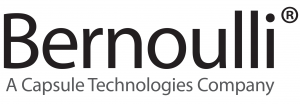
Patient Safety Awareness Week
by Janet Dillione, Chief Executive Officer
Every year, the healthcare industry recognizes Patient Safety Awareness Week to inspire and activate healthcare professionals around the world to improve patient and workforce safety.
Bernoulli Health is a proud supporter of Patient Safety Awareness Week. Our corporate mission is to help hospitals and caregivers fundamentally reimagine patient safety with a continuous clinical surveillance platform able to anticipate patient health risks in real-time and foster seamless clinical collaboration and decision-making.
The Future is Now
Until recently, patient safety processes were mostly reactive, and despite increased awareness and incredible technological advances, an alarming number of patients continue to die or are injured due to medical errors. A Johns Hopkins study puts the number fatalities around 250,000, but some studies suggest that estimate may be conservative.
Clinical focus remains on rescuing patients from adverse events, rather than preventing them in the first place. In response, regulatory agencies, like the Centers for Medicare & Medicaid Services (CMS) Hospital-Acquired Condition Reduction Program (HACRP), base reimbursement on key patient safety and performance measures.
Healthcare organizations face a steep climb to significantly reduce adverse events. The inadequacy of tried-and-tested processes, like vital sign spot-checks, point to an urgent need for new best practices. Fortunately, healthcare now possesses the ability to analyze billions of patient data elements in real-time and identify trends that capture an evolving portrait of a patient’s condition—continuous clinical surveillance.
A recent KLAS report, Clinical Surveillance 2018, indicates that “clinical surveillance tools hold the promise of giving caregivers clinically actionable insights that decrease mortality, reduce readmissions, and improve overall patient outcomes, and clinicians expect these alerts to be embedded directly within their workflow.”
Hospital investments in clinical surveillance are driven by organizations seeking to achieve the objectives of value-based care—and patient safety in the era of value-based care is increasingly defined as preventing adverse events before emergency interventions or costly escalations are required.
Early detection of deteriorating patient conditions can save lives, and early detection is a primary driver behind continuous clinical surveillance and the ability to enhance patient observation, reduce risks and protect patients.
Continuous clinical surveillance uses multi-variate rules to correlate data and create early warning notifications. This helps clinicians to quickly recognize and respond to signs of distress before risk becomes a rescue.
Continuous clinical surveillance also is a viable and sustainable solution for the multiple negative costs associated with patient deterioration, including emergency transfers or escalations in care, increased resource utilization, extended length of stay and hospital readmissions.
Just a few years ago, continuous clinical surveillance would have been impossible because there was no way to integrate data from different monitoring devices, apply analytics to that information in real-time, and communicate alerts to physicians and nurses beyond the nearest nurse’s station. But today, medical device data can be aggregated and analyzed in a continuous stream along with other relevant data such as patient data from the EHR. In addition, many clinicians now carry mobile devices that allow them to be alerted wherever they are.
Seizing the Opportunity
Continuous clinical surveillance offers hospitals the opportunity for immediate and predictable patient safety improvements through a systematic, goal-directed process that detects clinically relevant physiological changes in patients and alerts clinicians so they can intervene rapidly.
When combined with data and observations from the clinical record, a compelling story of the trajectory of a patient’s condition can form the basis for early intervention. With new reports, articles and studies being published, it is exciting to see the healthcare industry recognize that continuous clinical surveillance can deliver better, more consistent, more efficient and safer patient care.
Bernoulli Health is proud to support Patient Safety Week 2019. For more information about Bernoulli Health, visit www.bernoullihealth.com. Visit our Resource Center to download case studies, white papers and articles. Follow us on Twitter and LinkedIn, and use the hashtag #PSAW19 to join the conversation.
About the Author:
 Ms. Dillione holds a Bachelors of Arts degree from Brown University and has attended the Executive Development Program at the Wharton School of Business. She has over 25 years of experience leading global teams in the development and delivery of healthcare technology and services. Amongst her accomplishments, Ms. Dillione has served as Executive Vice President and General Manager of Nuance Communications Healthcare Division. She has also served as CEO of Siemens Health Services with executive responsibility for the global healthcare IT division.
Ms. Dillione holds a Bachelors of Arts degree from Brown University and has attended the Executive Development Program at the Wharton School of Business. She has over 25 years of experience leading global teams in the development and delivery of healthcare technology and services. Amongst her accomplishments, Ms. Dillione has served as Executive Vice President and General Manager of Nuance Communications Healthcare Division. She has also served as CEO of Siemens Health Services with executive responsibility for the global healthcare IT division.
Ms. Dillione is a past member of the Health Information and Management Systems Society (HIMSS) Advisory Board, a member of the College of Healthcare Information Management Executives (CHIME) and a frequent speaker at industry forums, meetings and conferences. Ms. Dillione passionately supports efforts to improve the quality and safety of healthcare delivery and technology’s role in doing so. In both 2017 and 2018, she was named by Becker’s Healthcare as one of the “Female Health IT Leader to Know”. Ms. Dillione is also a member of the CorMedix Board of Directors. View Janet’s profile on Linkedin.


